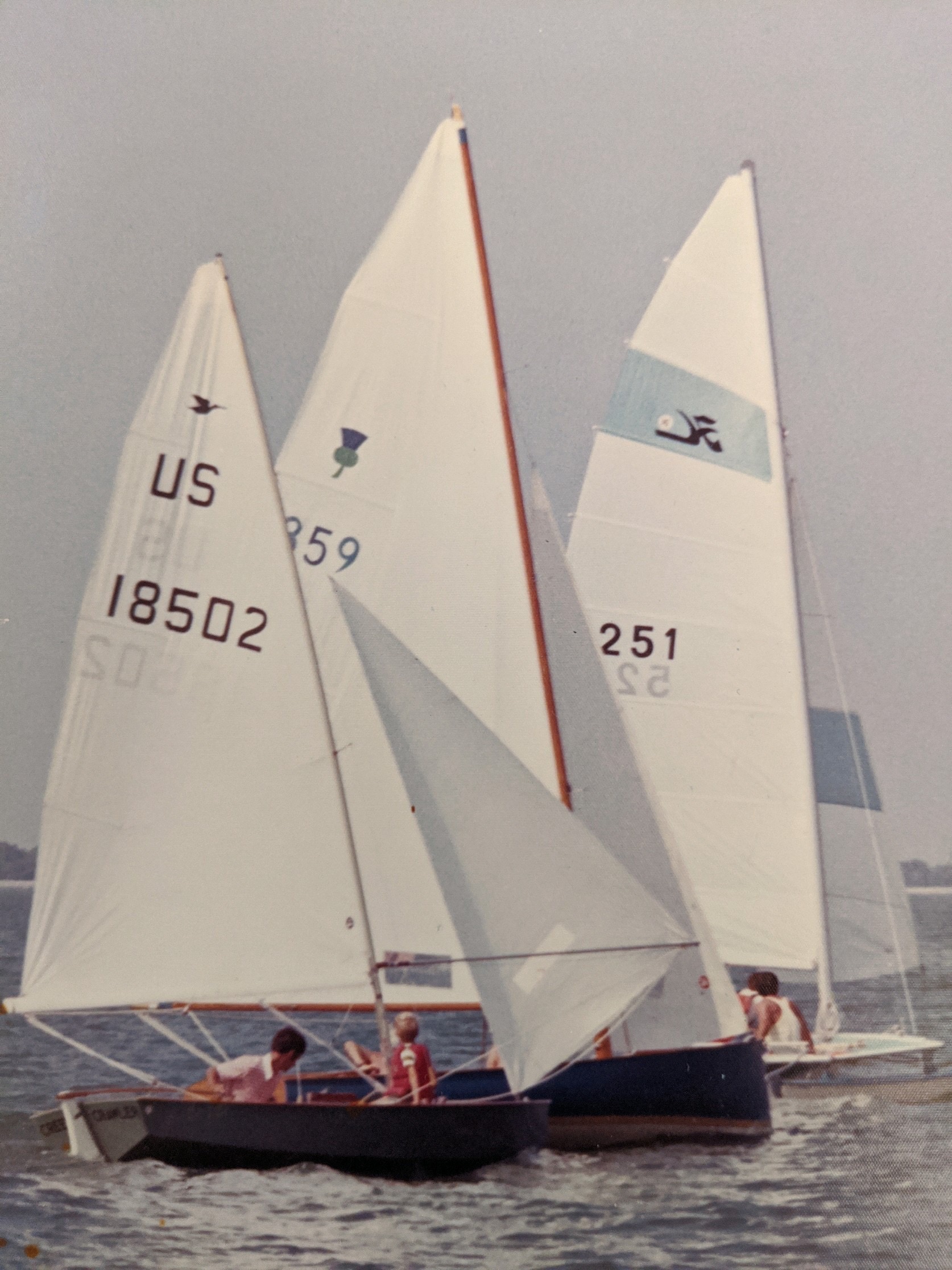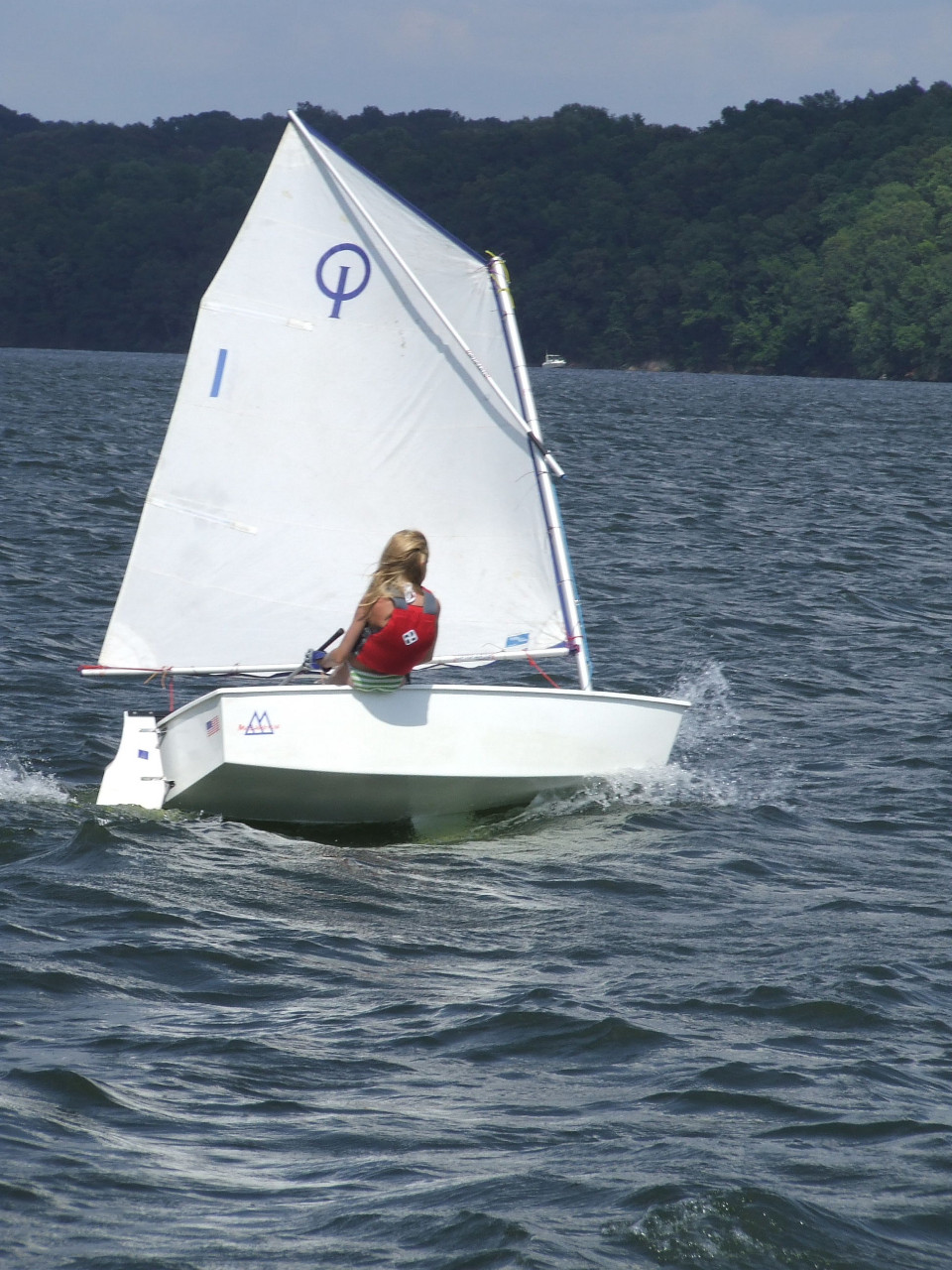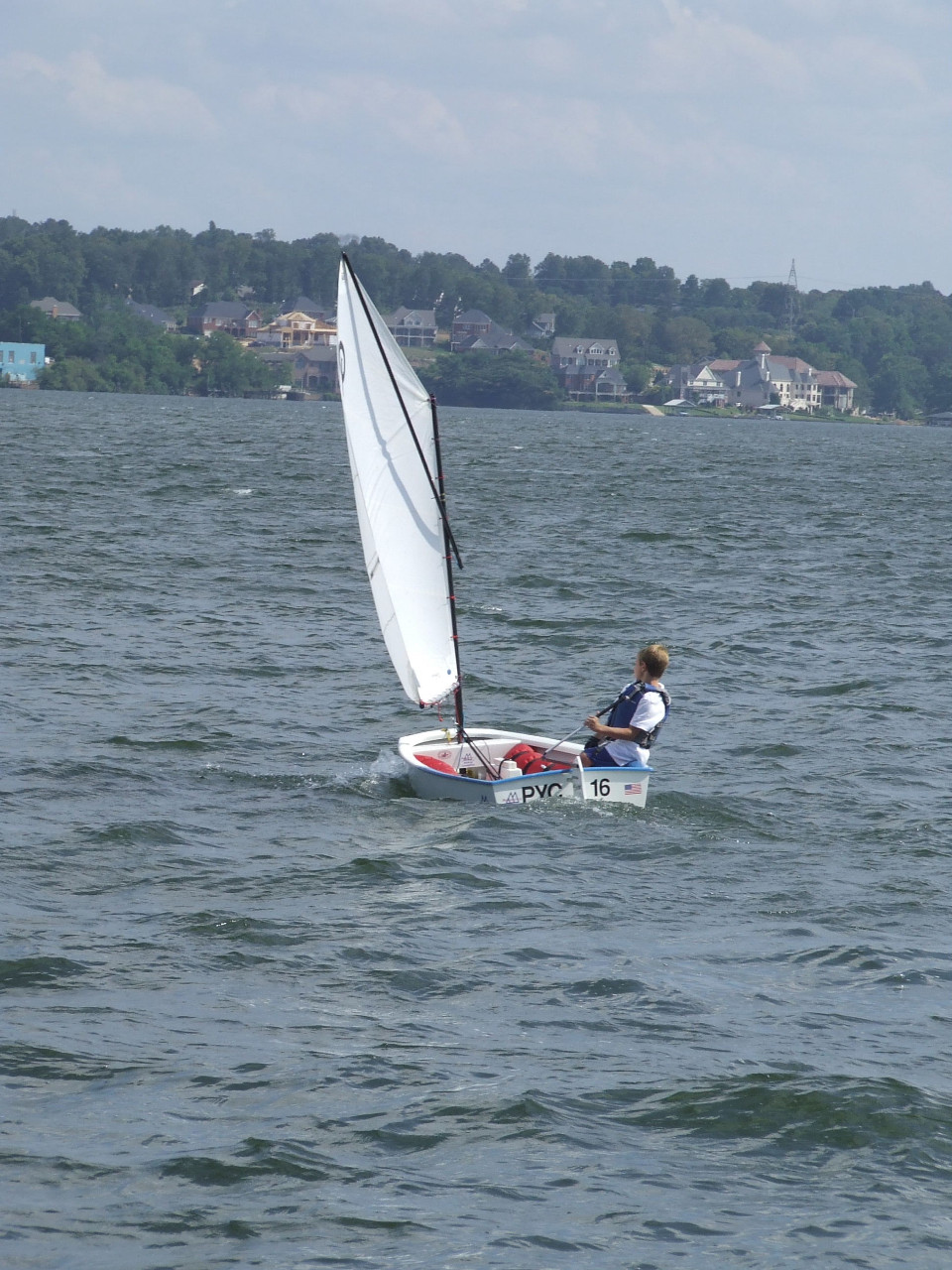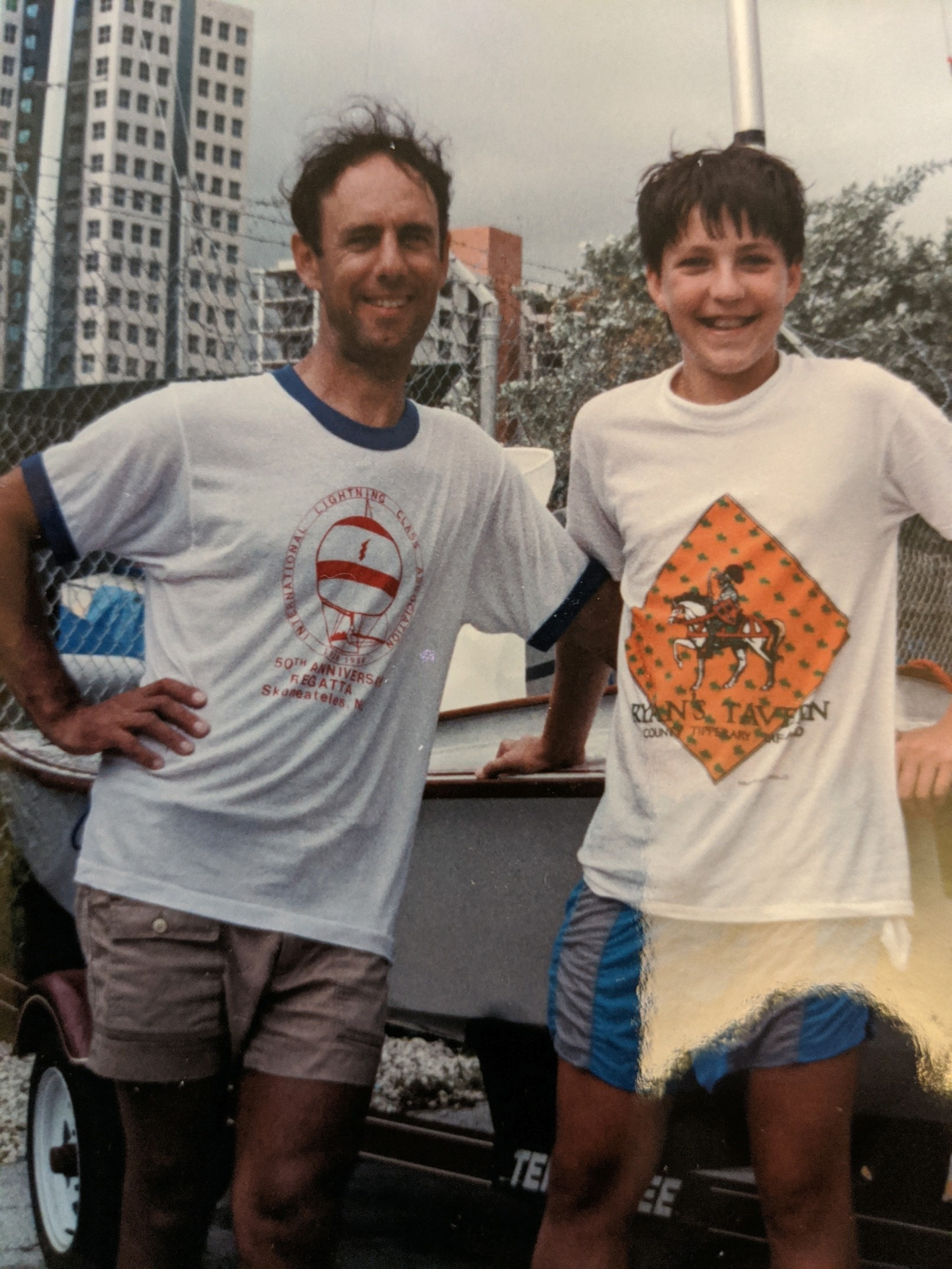What follows is an article originally written by a father, Steve Sherman, who wanted to teach his boys how to sail. It was this experience that eventually made building the Optimist his life’s ambition. His love for sailing is now shared by his grandchildren (pictured below).
We hope this article not only allows people who learned to sail in the Optimist an opportunity to reminisce, but encourages them to share their experience with parents looking for a skill or activity to participate in this summer.
The Optimist-a 35 Year Perspective – Safe Design Breeds Success
By Steve Sherman, Owner of McLaughlin Boat Works
In 1970, I was living in Muncie, Indiana. My three sons were reaching the age when I wanted them to share the joy that sailing had brought me.
I talked our sailing club into starting a junior sailing program. We bought ten Optimists from Paul Hemker at Dynamic Plastics.
The first day my seven-year-old son David sailed from shore enthusiastically, motivating his brother, four-year-old Mike, to try it too. We rigged a second boat for Mike and out he went.
Even having never skippered before, he made it out and back in the eight knot breeze.
In hindsight, it was probably unwise to send Mike out, but the experience was a positive one for him, a fact that is almost entirely due to the excellent design of the Optimist.

Over these many years as I have built Optimists and observed thousands of young skippers,
I’ve come to understand why this design is so great and what it really offers our children.
The hull is not heavy. At only 77 lbs., it sails well in light air. The sail is small, allowing even a 65 lb. skipper to tackle big seas and high winds.
For learn to sail programs the Optimist is perfect. It can safely accommodate two beginners. Put them in the bottom of the cockpit and send them out on their own.
They’ll not wander far simply because the boat doesn’t move very fast. The speed of the Optimist enhances its safety as a learn-to-sail boat. It keeps the instructor in control and the program safe.
Try this with Sunfish and in five minutes, your beginners will be spread over a mile wide circle — a definite safety problem.


In an Optimist, beginners don’t feel in danger of capsizing because the flat bottom gives high initial stability. Because they’re sitting on the floor, which is below the waterline, their combined weight resists the sail’s tipping forces.
The design virtually guarantees that a beginner’s first sailing experience will be a positive one.
In my sailing career, I have taken hundreds of adults out for their first sail. About 20 percent never get in a sailboat again.
Why? The wind, waves, and heeling can terrify them. Children are even more susceptible to these concerns.
The Optimist, by contrast, feels “safe and stable, encouraging a higher percentage of children to finish the program, and then go on to fully enjoy the benefits of recreational or competitive sailing.
There are other significant benefits to a child under ten independently rigging and launching their own ship and returning it safely to port.
The, self- esteem, self – reliance and self-discipline learned will serve the sailor throughout life.
As a young dad I took a course called “Parent Effectiveness Training.”
It taught that the overriding objective of parenting is to instill self-confidence and utilize all the creativity and potential with which they were born.
The Optimist sailing experience is perhaps the best way I have ever seen to attain that goal.
By the way, Mike is now the President at McLaughlin and still loves the Optimist!

Every sailor wants to have an edge when it comes time to compete, and now you know how to get it.